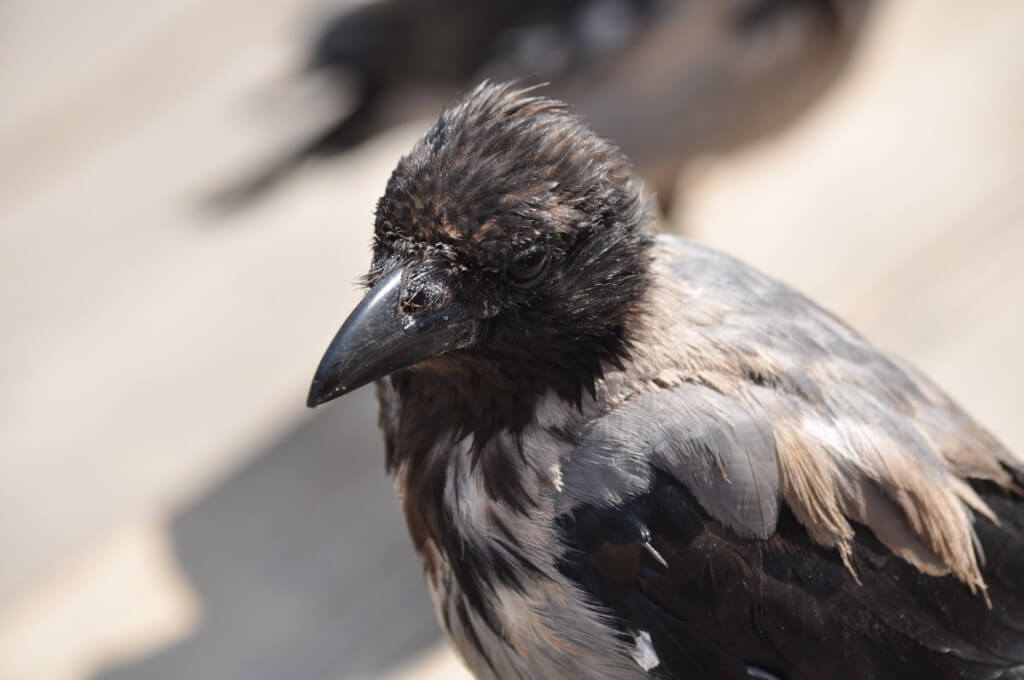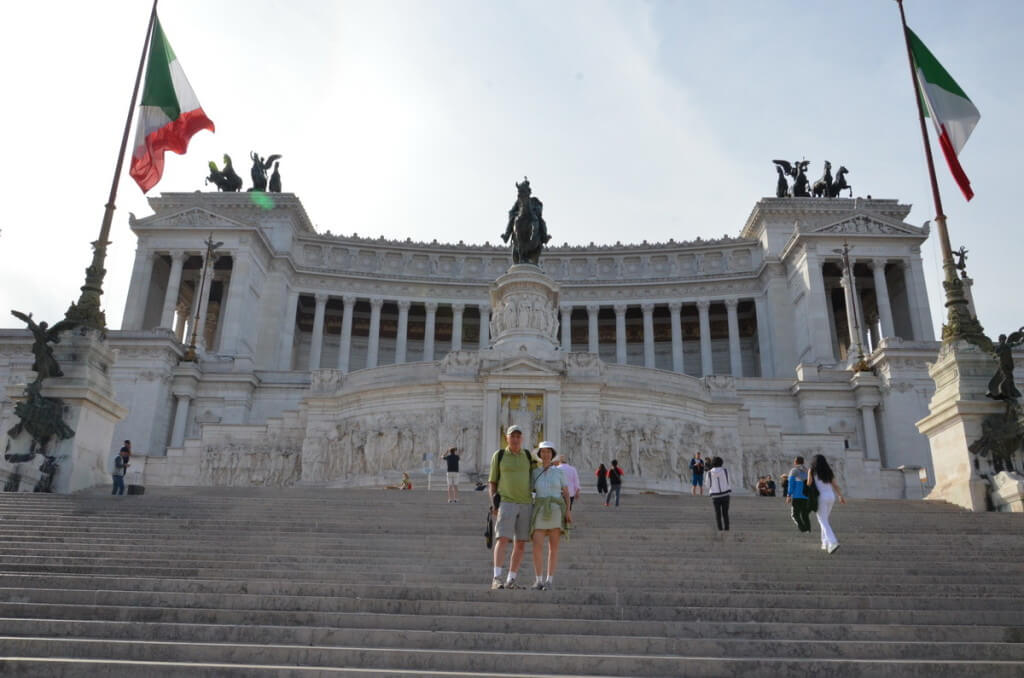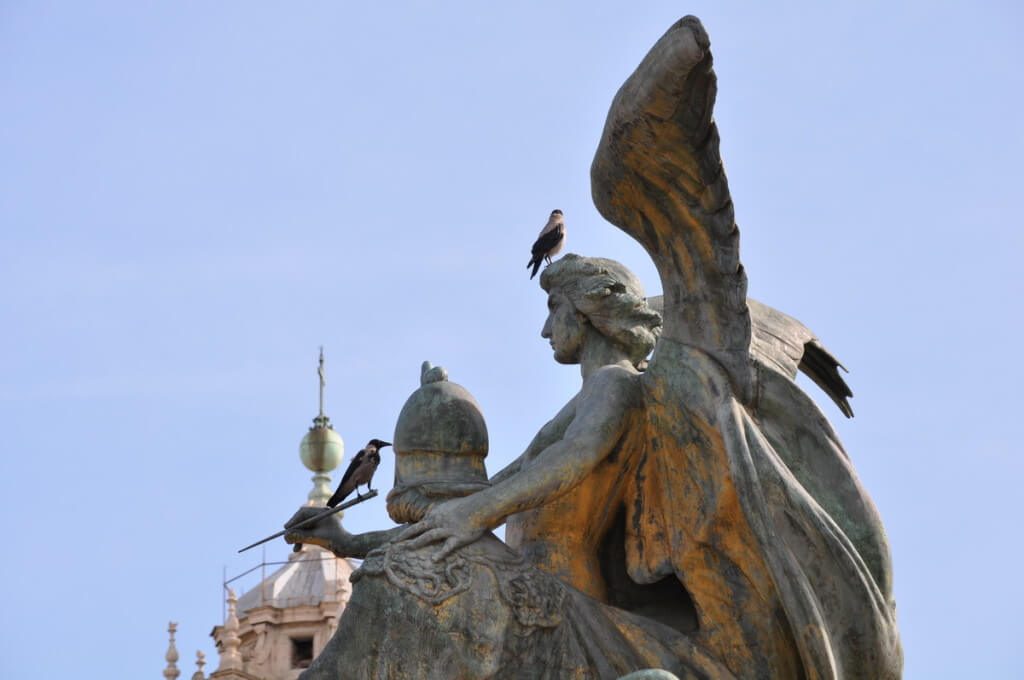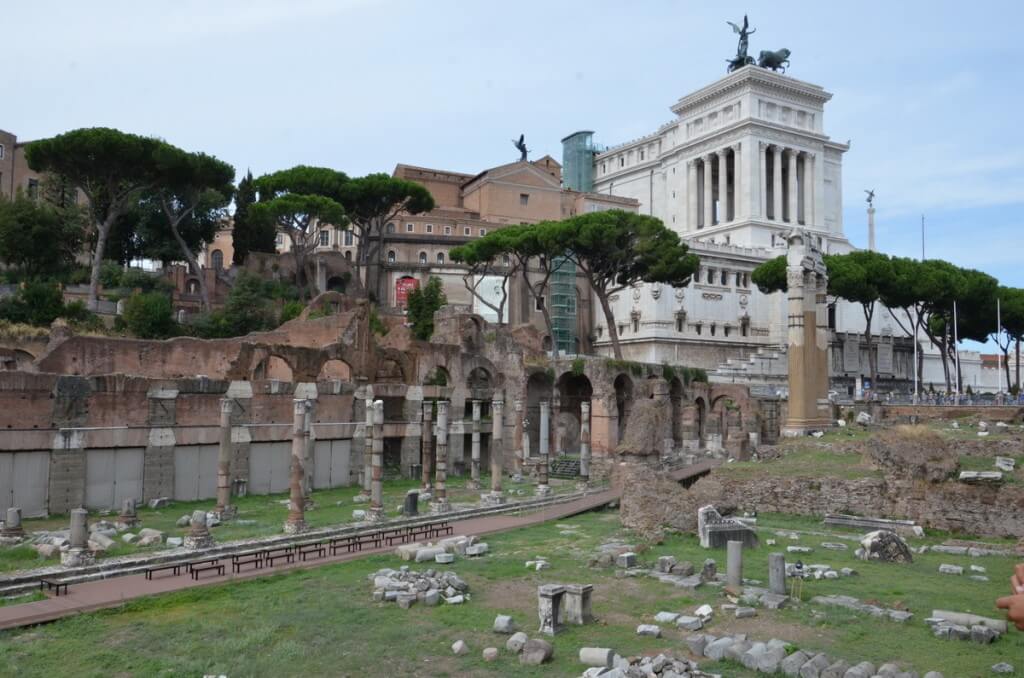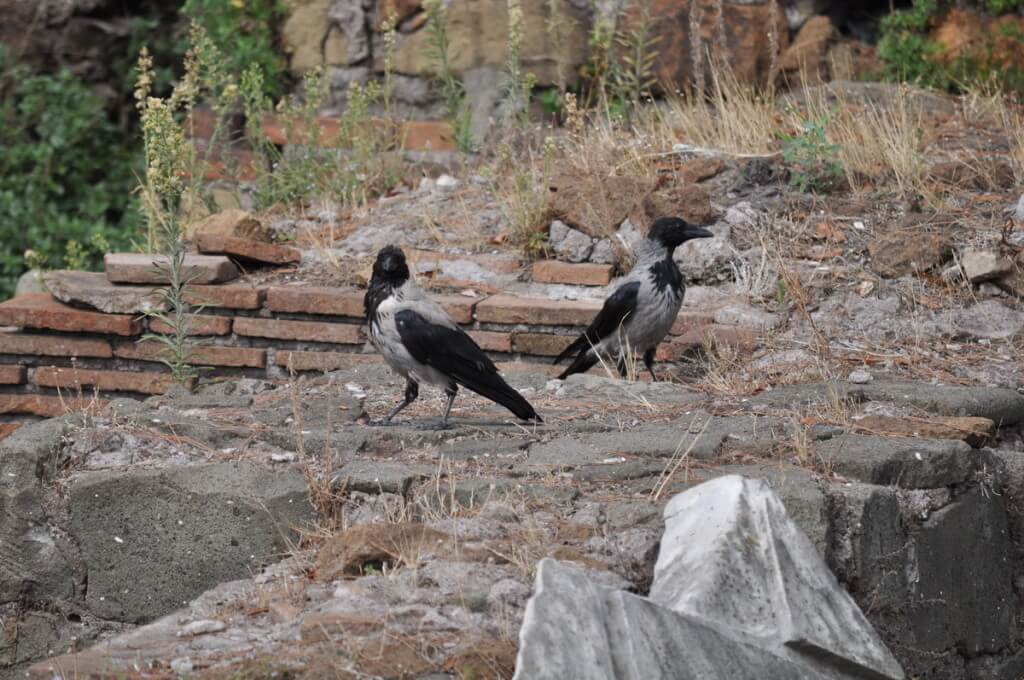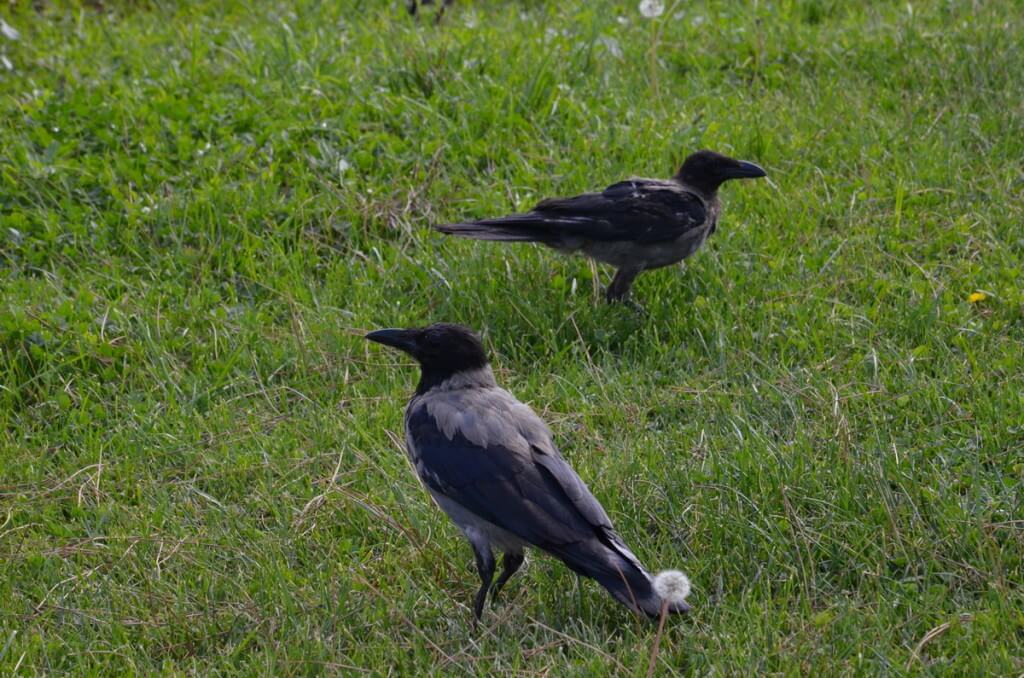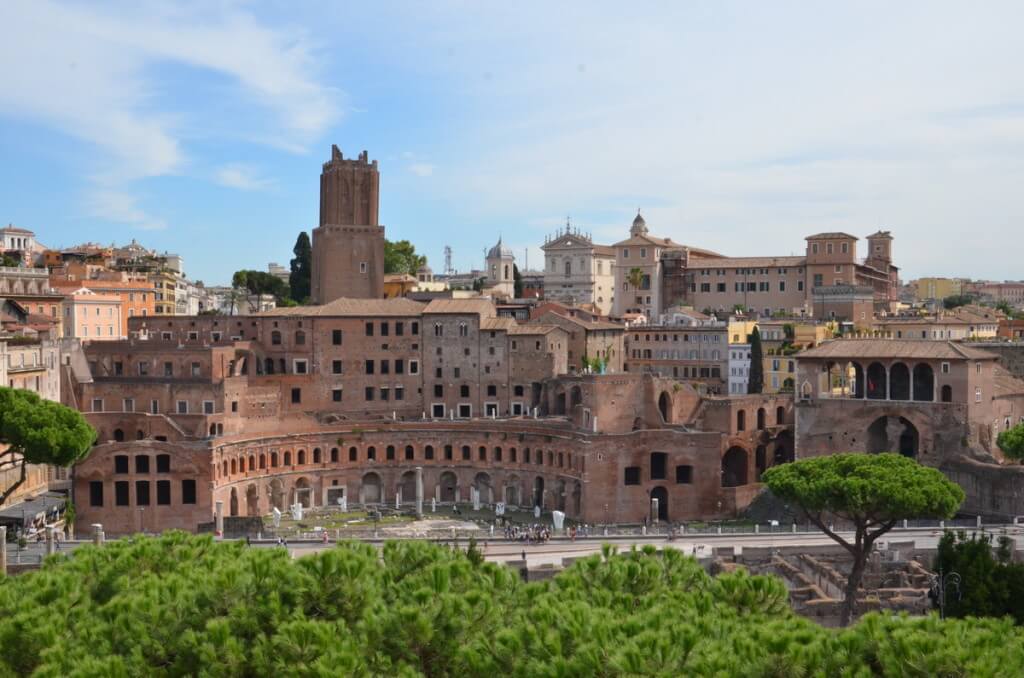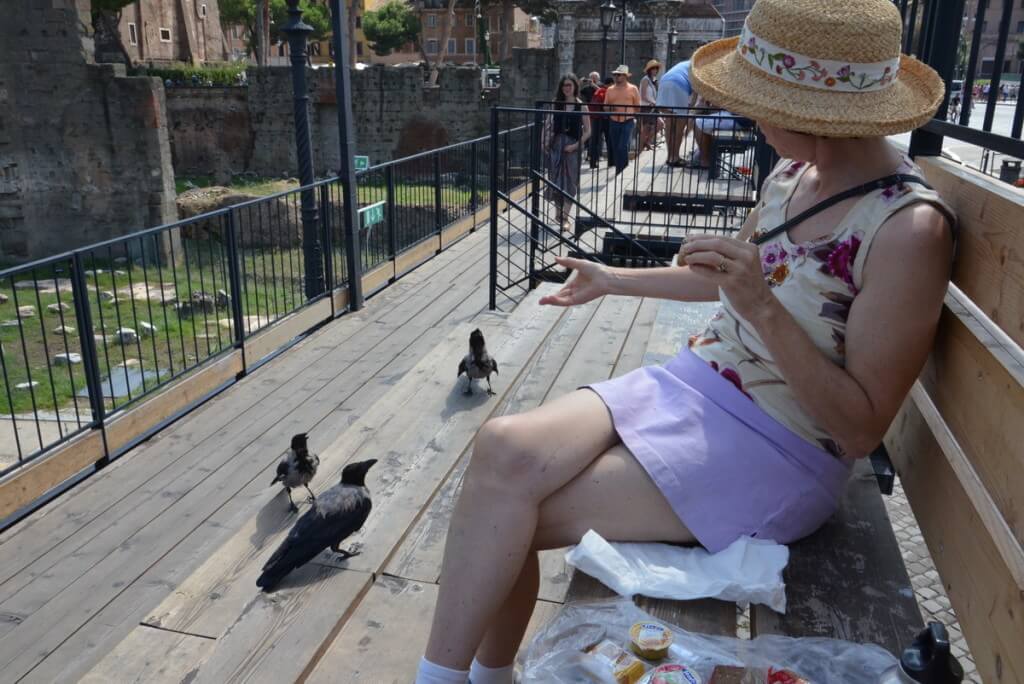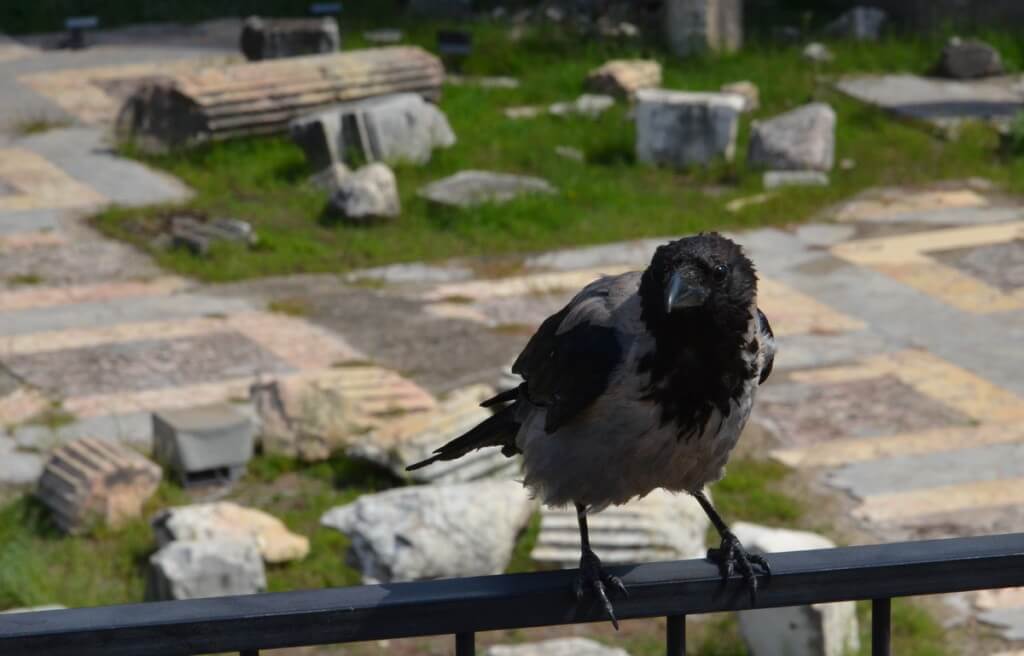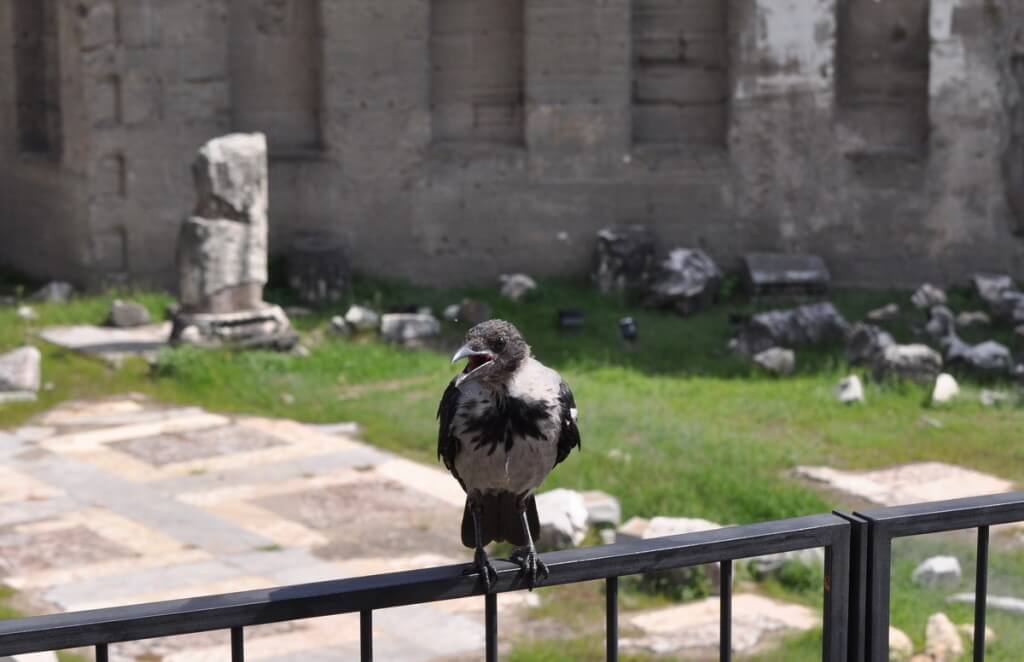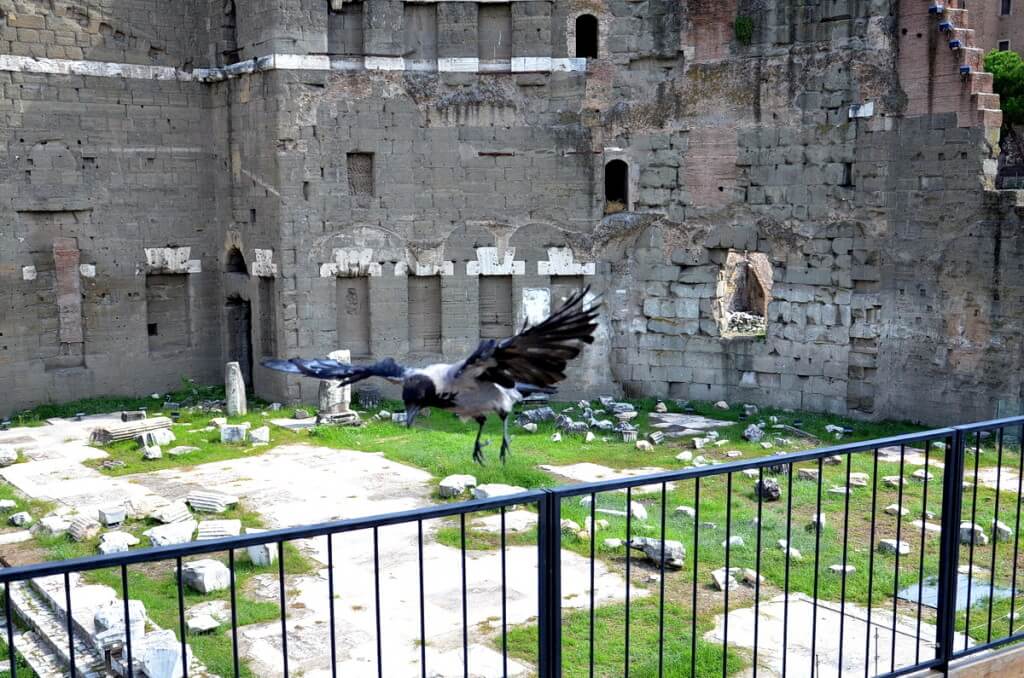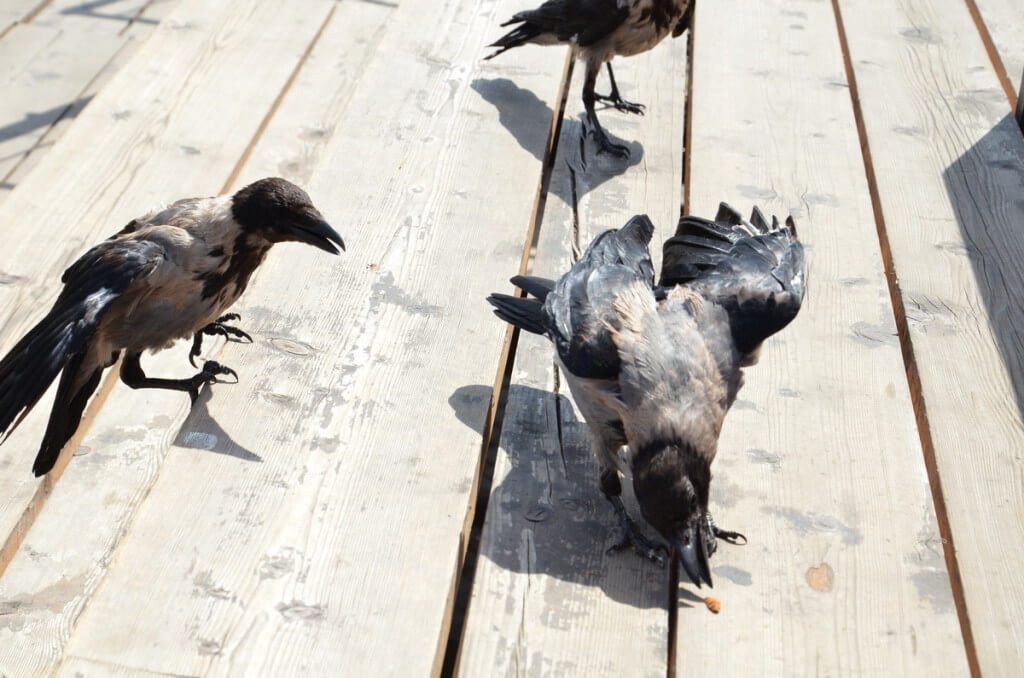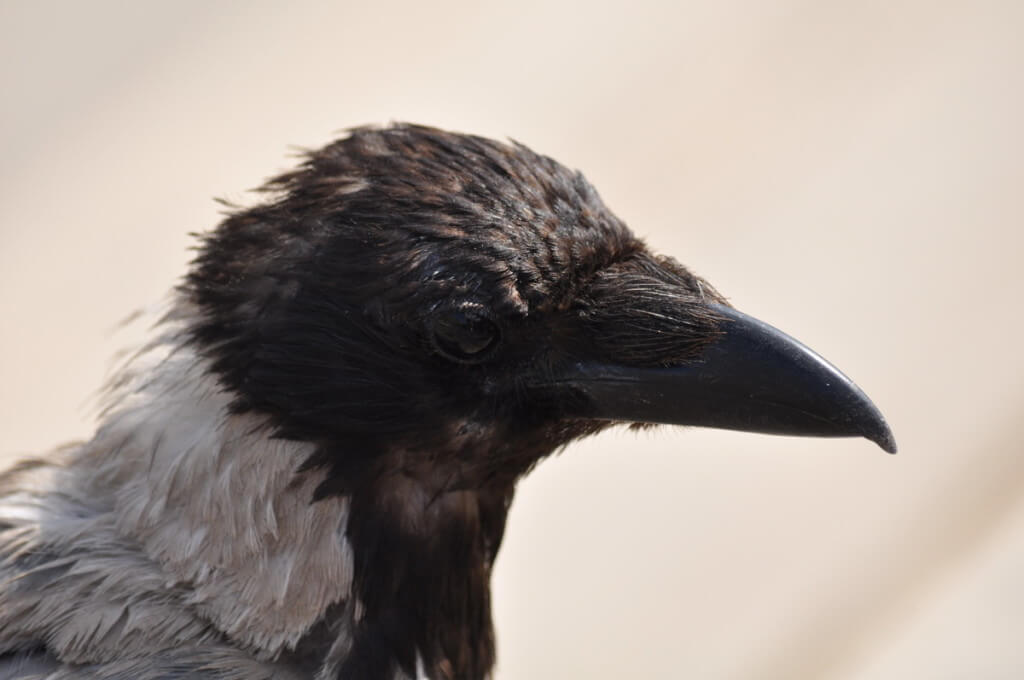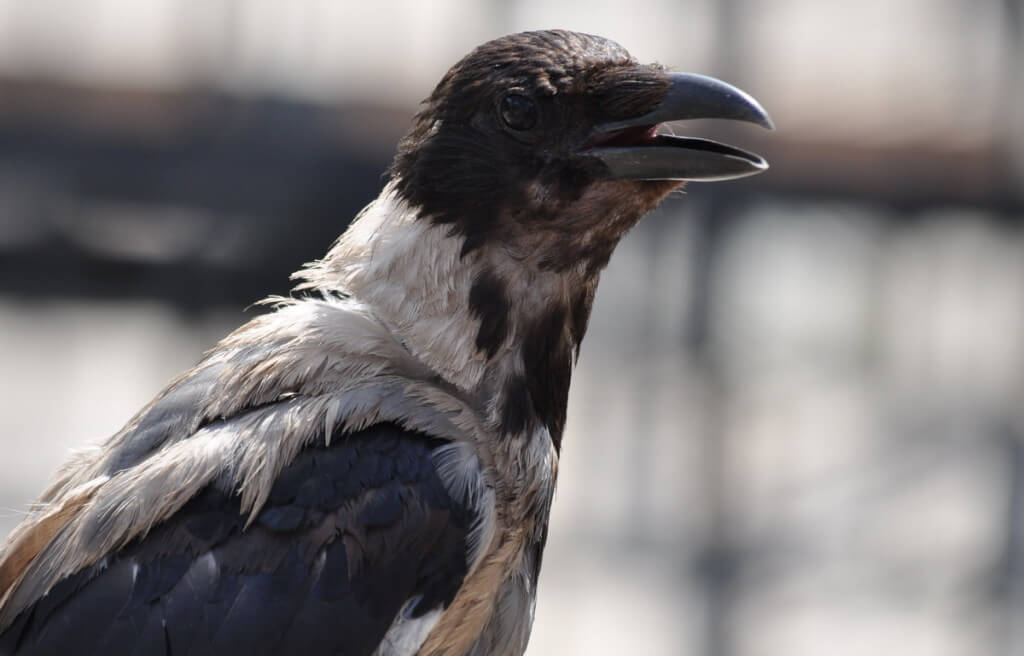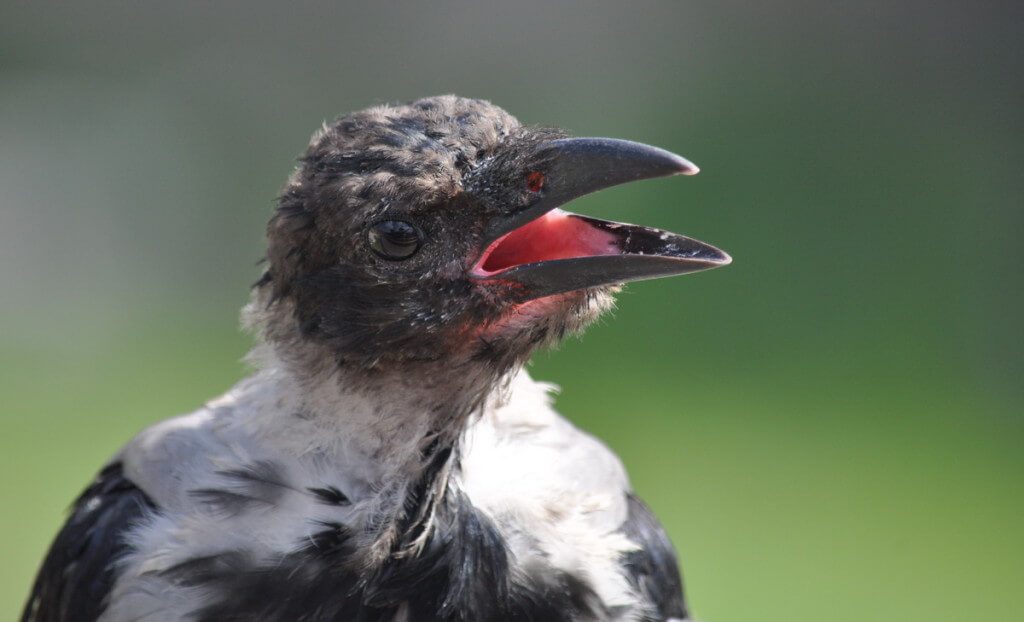Hooded Crows Among the Ancient Ruins of Rome
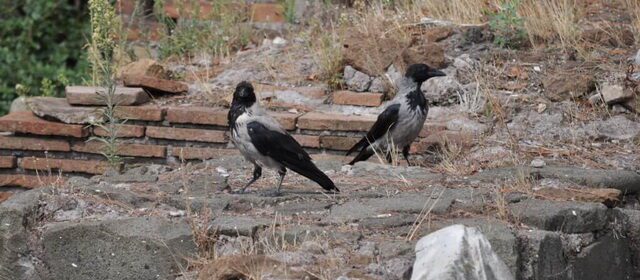
I’ve got to say that, on our first full day in Rome, Italy, looking for wildlife of any sort was not at the top of our list. We had too many ruins to explore, too much history on which to focus. But there we were, barely out of our hotel when Bob spotted a Hooded Crow as we ascended the steps of Il Vittoriano, just off of Piazza Venezia. Of course, we had to get a record shot for this sighting of a new species.
That had to wait though because we had just corralled another couple of tourists to snap a photo of Bob and me in front of the magnificent monument, and that is when Bob caught a glimpse of a large bird flying towards one of the angel sculptures.
Once determined that we had an acceptable photograph of Bob and me, and thanks given to the other pair, we hastened to zero in on two Hooded Crows that thankfully were still perched nearby.
We did not know, offhand, the exact name of the bird species, but could deduce by looking at one that it was some type of crow not unlike the American Crows seen at home.
The Roman Forum backs onto Il Vittoriano so it was logical to make it the next stop on our self-guided tour. The sprawling ruins of The Forum had us loitering there for hours, and over that period of time, Bob and I took note of several Hooded Crows prowling in amongst the architectural pieces.
When seen from afar, it seemed that the Hooded Crows were finding tidbits to eat within the crevices of the crumbling walls,
and the Crows methodically hopped along the bricks before alighting on the rare bits of grass to search for insects. Omnivores that they are, Hooded Crows will eat almost anything; they are true scavengers.
It was not until a couple of days later that Bob and I had a close encounter with a number of these clever birds. Our visit to Trajan’s Market coincided with lunch time,
so we took a spot on the bleachers that are conveniently placed to allow sightseers a grand view of Trajan’s Market and the Forum of Caesar. Within minutes, a number of Hooded Crows swooped in from the surrounding area to snatch up any crumbs that fell onto the wooden platform.
Because we were pleased to have a closer look at the birds, I made no effort to keep crumbs gathered up but rather scattered them about to gain the attention of even more Hooded Crows.
A Hooded Crow is easily recognized by the colour of its plumage. A shiny black head, wings, tail, throat and bib are in stark contrast to dirty grey feathers on the rest of its body.
As the various birds flew in to glean what crumbs that they could, we were afforded an opportunity to study their behaviour. Hooded Crows like all Corvids are very clever birds. In fact they are not only the most intelligent of birds but also are regarded as in the top tier of intelligent animals.
The Hooded Crows provided great lunchtime entertainment as they jostled for foraging rights there at my feet. Bits of cookie, bread and crackers were easy to fling into the air and resulted in even more action as the birds tried to nab the pieces in mid-air.
At such close quarters, I was struck by the thick, sturdy bill that was not unlike that of a Raven. When the sun glinted in one of the Hooded Crow’s eyes, I could see that the iris was dark brown giving the Crow an air of wisdom.
The Crow’s feet were also black.
The Hooded Crows competed fiercely for the morsels that were scattered on the wooden planks, and when the supply dried up,
they became quite vocal about it. There was no getting around the fact that the Crows were trying to communicate with me, encourage me to give up more of my lunch. With so many vying for the food, they had no opportunity to secret any of it away for later. It was all about taking advantage of the moment.
Frame To Frame – Bob and Jean

